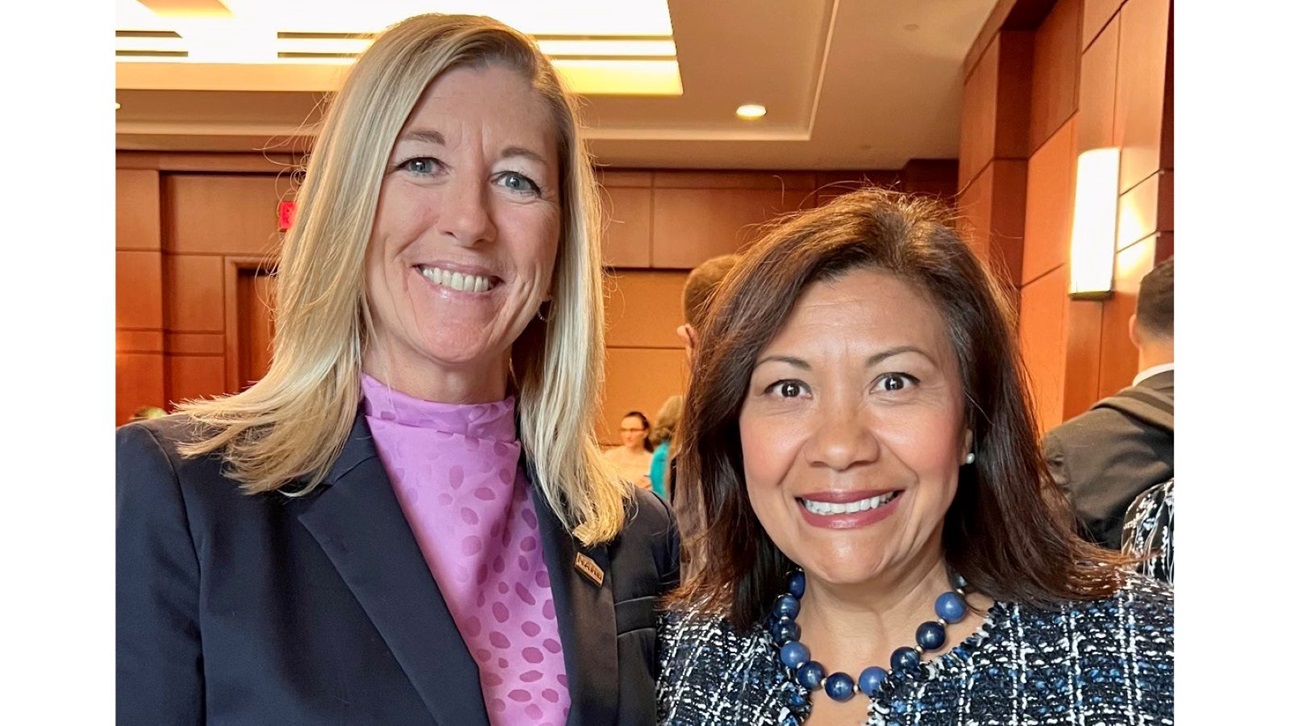NAHB First Vice Chairman Alicia Huey Tells Lawmakers How to Address Affordability Crisis
NAHB First Vice Chairman Alicia Huey today participated in the New Democrat Coalition’s Housing Roundtable and outlined headwinds facing the housing industry as well as urging lawmakers to enact specific policy solutions to ease the nation’s housing affordability woes.
Huey cited a number of factors that have considerably slowed home building since the start of the pandemic:
- Building material prices have jumped more than 35% since January 2020, and 80% of that increase has occurred since January 2021. For example, steel mill prices are twice their January 2021 level, gypsum is up 22% and exterior paint is up 50%.
- Skilled trade labor shortages are making housing more expensive and increase the time it takes to build a home.
- Rents are on the rise due to a lack of housing supply, and higher interest rates have pushed the average mortgage rate to 5.9%, the highest level since 2008.
“In fact, housing affordability has fallen to a decade low,” Huey told lawmakers. “The July median home sales price is $428,700, an increase of $58,900 from just a year ago. And seven out of 10 households cannot afford a new, median-priced home.”
To combat the growing housing affordability crisis, Huey urged the New Democrat Coalition to call on the Biden administration to suspend tariffs on Canadian lumber and immediately enter into negotiations with Canada on a new softwood lumber agreement.
Huey also called on Congress to play an important role on the labor supply issue by ensuring that vocational training opportunities stand on the same footing as a four-year college path.
NAHB has also been working closely with lawmakers to highlight how building material production bottlenecks and rising lumber prices are harming home builders and home buyers. Huey specifically noted the efforts of Rep. Norma Torres (D-Calif.), who has consistently cited the urgent need to resolve America’s housing affordability challenges.
“Rep. Torres, I want to thank you for the many times you have spoken out on lumber costs and their impact on housing affordability, especially the numerous times you have appeared on the House floor to speak on our behalf,” said Huey.

Latest from NAHBNow
Dec 23, 2025
Lumber Capacity Has Peaked for 2025An annual revision to the Federal Reserve G.17 Industrial Production report shows current sawmill production levels above 2017 by 7.5%, but just 0.3% above 2023 levels.
Dec 22, 2025
Can Offsite Housing Solve the Housing Affordability Crisis?Offsite construction – a method in which components are planned, designed, fabricated in a factory setting and then transported and assembled onsite – is something more community-based organizations (CBOs) are turning to as a solution to the housing affordability crisis.
Latest Economic News
Dec 22, 2025
State-Level Employment Situation: September 2025In September 2025, nonfarm payroll employment was largely unchanged across states on a monthly basis, with a limited number of states seeing statistically significant increases or decreases. This reflects generally stable job counts across states despite broader labor market fluctuations. The data were impacted by collection delays due to the federal government shutdown.
Dec 19, 2025
Existing Home Sales Edge Higher in NovemberExisting home sales rose for the third consecutive month in November as lower mortgage rates continued to boost home sales, according to the National Association of Realtors (NAR). However, the increase remained modest as mortgage rates still stayed above 6% while down from recent highs. The weakening job market also weighed on buyer activity.
Dec 18, 2025
Lumber Capacity Lower Midway Through 2025Sawmill production has remained essentially flat over the past two years, according to the Federal Reserve G.17 Industrial Production report. This most recent data release contained an annual revision, which resulted in higher estimates for both production and capacity in U.S. sawmills.
